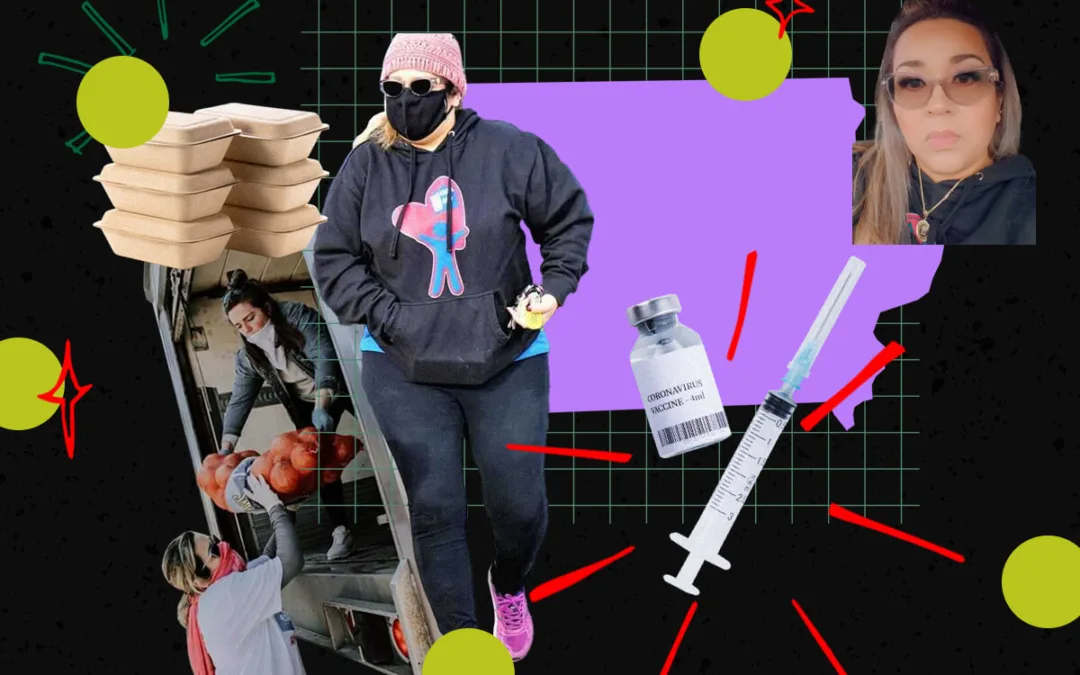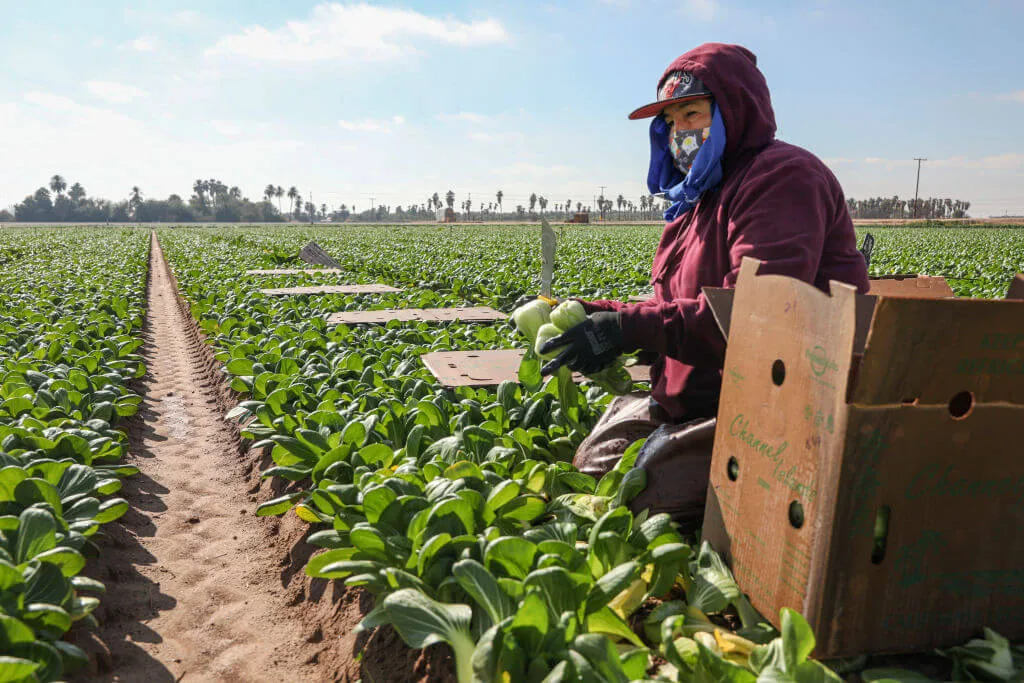
Olivia Marton, an 11th grader at Lincoln Park High School, studies school work with her computer at her home in Chicago. AP Photo/Nam Y. Huh
“Stay-at-home” or “shelter-in-place” orders direct residents to remain home unless they work essential jobs or need to get food, prescription drugs, or meet a few other requirements.
As states continue to push “social distancing” to help slow the spread of the novel coronavirus, Illinois residents will be required to stay at home starting Saturday evening for at least the next two and a half weeks, with few exceptions.
Illinois Gov. J.B. Pritzker on Friday became the latest governor to issue a “stay-at-home” order, directing residents to stay in their homes to help slow the spread of the coronavirus. Under Pritzker’s order, Illinoisans can only leave their homes in certain circumstances, such as going to the grocery store to buy food, picking up prescription medications at the pharmacy, or going to work for an “essential job,” a designation which includes healthcare providers, pharmacists, and grocery store workers.
Pritzker issued the order during a Friday press conference, saying he made the decision only after consulting with numerous medical experts, including epidemiologists, mathematicians, and modelers to better understand the progression of COVID-19 in Illinois.
“I’ve asked every one of these experts ‘What action can I take to save the most lives?’” Pritzker said. “They’ve come back to me with one, inescapable conclusion. To avoid the loss of potentially tens of thousands of lives, we must enact an immediate stay-at-home order for the state of Illinois.”
Pritzker cited the need to prevent the state’s hospital systems from being overwhelmed in issuing his order. According to the Illinois Department of Public Health, the state currently has 585 confirmed cases of COVID-19 and five people have died of the disease, as of Friday afternoon.
“Left unchecked, cases in Illinois will rise rapidly. Hospital systems will be overwhelmed, protective equipment will become scarce, and we will not have enough healthcare workers, or hospital beds, or ventilators for the overwhelming influx of sick patients,” Pritzker said. “The only strategy available to us to limit the increase in cases and ensure our healthcare system has capacity to treat those who come ill is to mitigate the spread of coronavirus in the most robust manner possible.”
Pritzker’s order, which goes into effect at 5 p.m. local time Saturday, follows a similar “stay-at-home” order issued by California Gov. Gavin Newsom on Thursday. Newsom’s statewide directive follows those made by several individual California counties and cities, including San Francisco and Los Angeles County.
RELATED: Coping With Quarantine: How Six People Are Dealing With Being Forced Into Isolation
New York Gov. Andrew Cuomo on Friday also issued an order directing New Yorkers to stay at home as much as possible, ordering all employees who work outside of “essential businesses” to remain in their homes. Cuomo declined to call his edict a “shelter-in-place” order, but it has many of the same guidelines as those issued by Newsom and Pritzker.
The orders follow the closures of dine-in restaurants, bars, nightclubs, movie theaters, gyms, and many other public venues, and are intended to keep people indoors and away from large crowds in order to limit the spread of the coronavirus.
Other states and cities, including Portland, Oregon, are considering enacting similar shelter-in-place ordinances.
Here’s a breakdown of what all of this means.
What exactly is a “shelter-in-place” or “stay-at-home” order?
Essentially, it means exactly what it says. You stay at home and only leave for very specific reasons.
What are those reasons?
The guidelines vary from state to state and city to city, but generally, you’re expected to stay in your home unless you need to:
- Buy groceries or pick up take-out from restaurants
- Pick up prescription medications or go to a doctor’s appointment
- Fill your car with gas
- Go to the bank
- Go for a solitary walk or exercising outdoors, as long as you stay six feet apart from others
- Go to work for an “essential job,” a designation which includes working at healthcare providers, pharmacies, grocery stores, delivery and take-out restaurants, child-care providers, gas station clerks, garbage collectors, utility companies, and plumbers and other skilled contractors.
If a “shelter-in-place” order has been issued in your city, county, or state, please check your local government website for a full list of “essential jobs.” California’s full order can be found here, for example.
Are roads or public transit being closed?
Local roads and highways remain open and public transit continues to operate, but residents are advised using it unless absolutely necessary.
How long is this going to last?
California’s “stay-at-home” order is indefinite, while the one in Illinois currently runs through April 7.
Why are we doing this again?
Because the coronavirus is extremely contagious and has been spreading like wildfire. The only way to slow its spread is to practice “social distancing,” or limit social contact. While an increasing number of government leaders have encouraged social distancing over the past week, they are now starting to issue formal “stay-at-home” orders to ensure people are complying.
Won’t this hurt the economy even more?
Yes. Gov. J.B. Pritzker of Illinois acknowledged the economic harm that could come from a “stay-at-home” order, but also underscored the urgency of slowing the spread of the disease.
“I don’t come to this decision easily. I fully recognize that in some cases, I am choosing between saving people’s lives and saving people’s livelihoods,” Pritzker said. “But ultimately, you can’t have a livelihood if you don’t have your life.”
Politics

Teamsters and UPS Reach Tentative Deal to Avoid Strike, 340,000 Workers to Get Raises
The tentative deal represents a huge win for full- and part-time UPS Teamster workers, who would get significant pay raises and better working...



One Republican Senator Is Blocking 265 Military Promotions, Leaving the Marines Without a Confirmed Leader
Sen. Tommy Tuberville's decision means these military officers are not getting the pay raises they’re owed, cannot move their families to wherever...
Local News



Teamsters and UPS Reach Tentative Deal to Avoid Strike, 340,000 Workers to Get Raises
The tentative deal represents a huge win for full- and part-time UPS Teamster workers, who would get significant pay raises and better working...



One Republican Senator Is Blocking 265 Military Promotions, Leaving the Marines Without a Confirmed Leader
Sen. Tommy Tuberville's decision means these military officers are not getting the pay raises they’re owed, cannot move their families to wherever...




